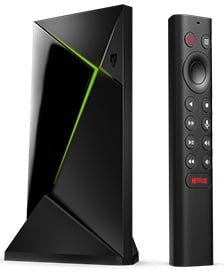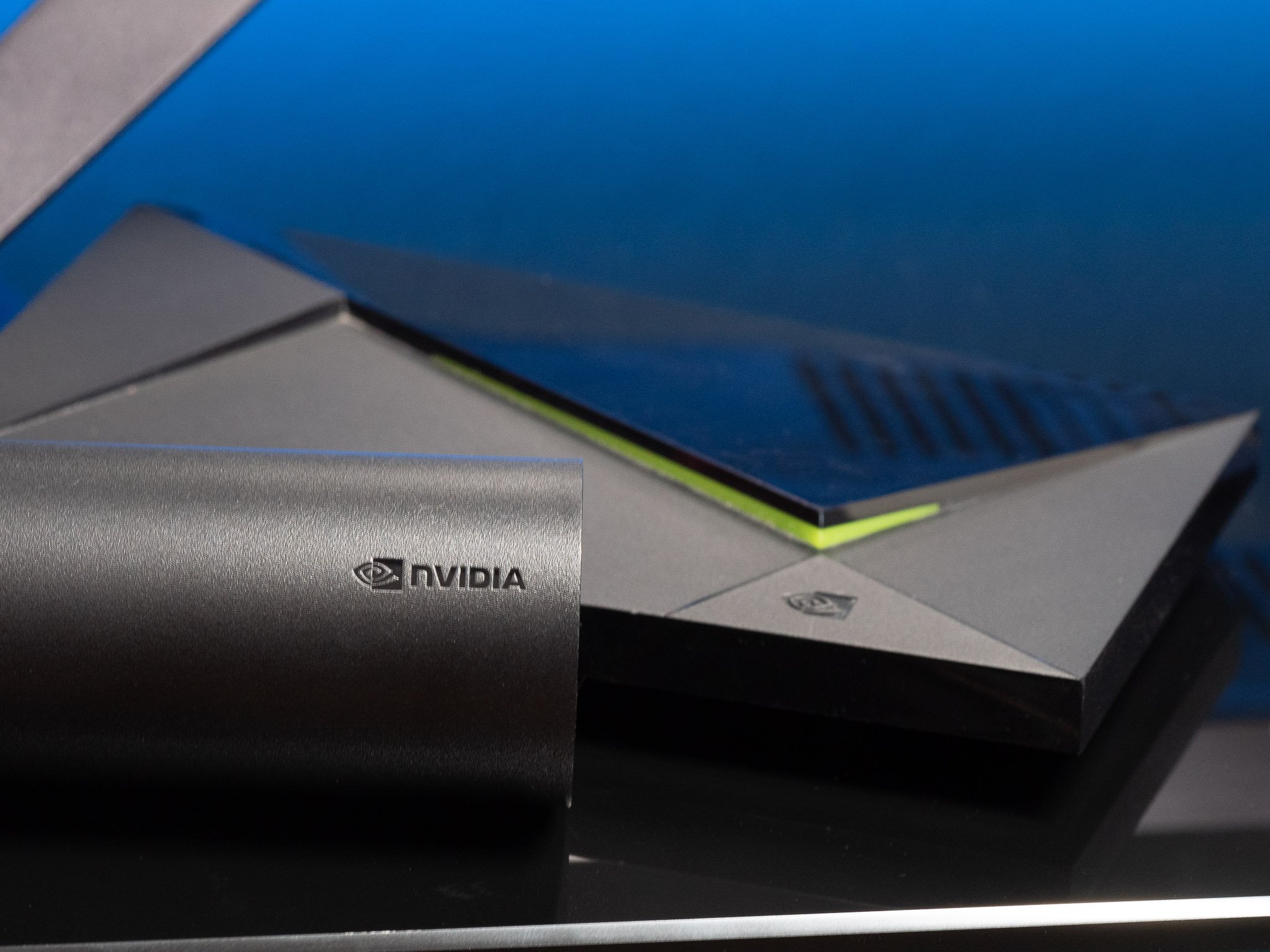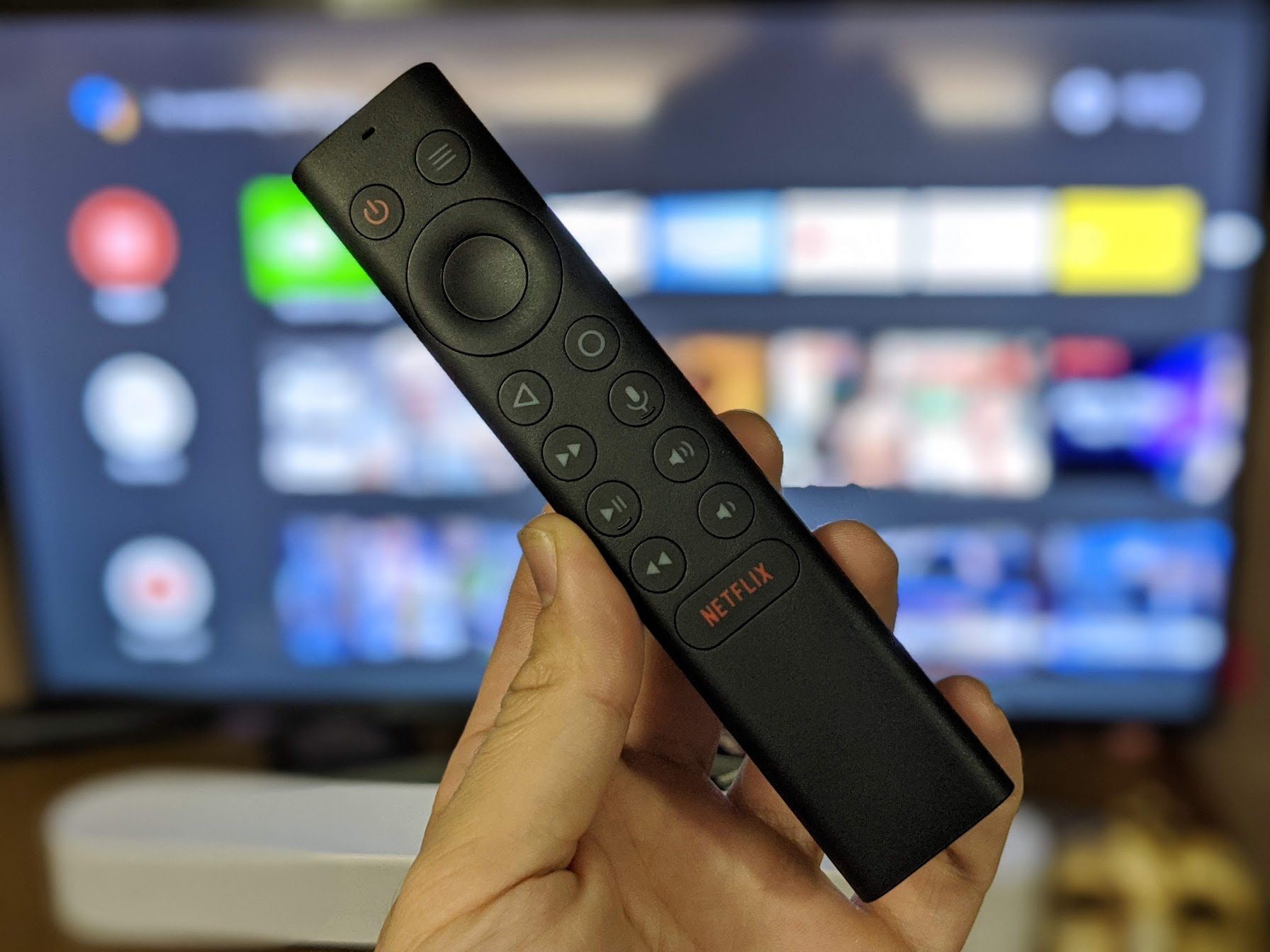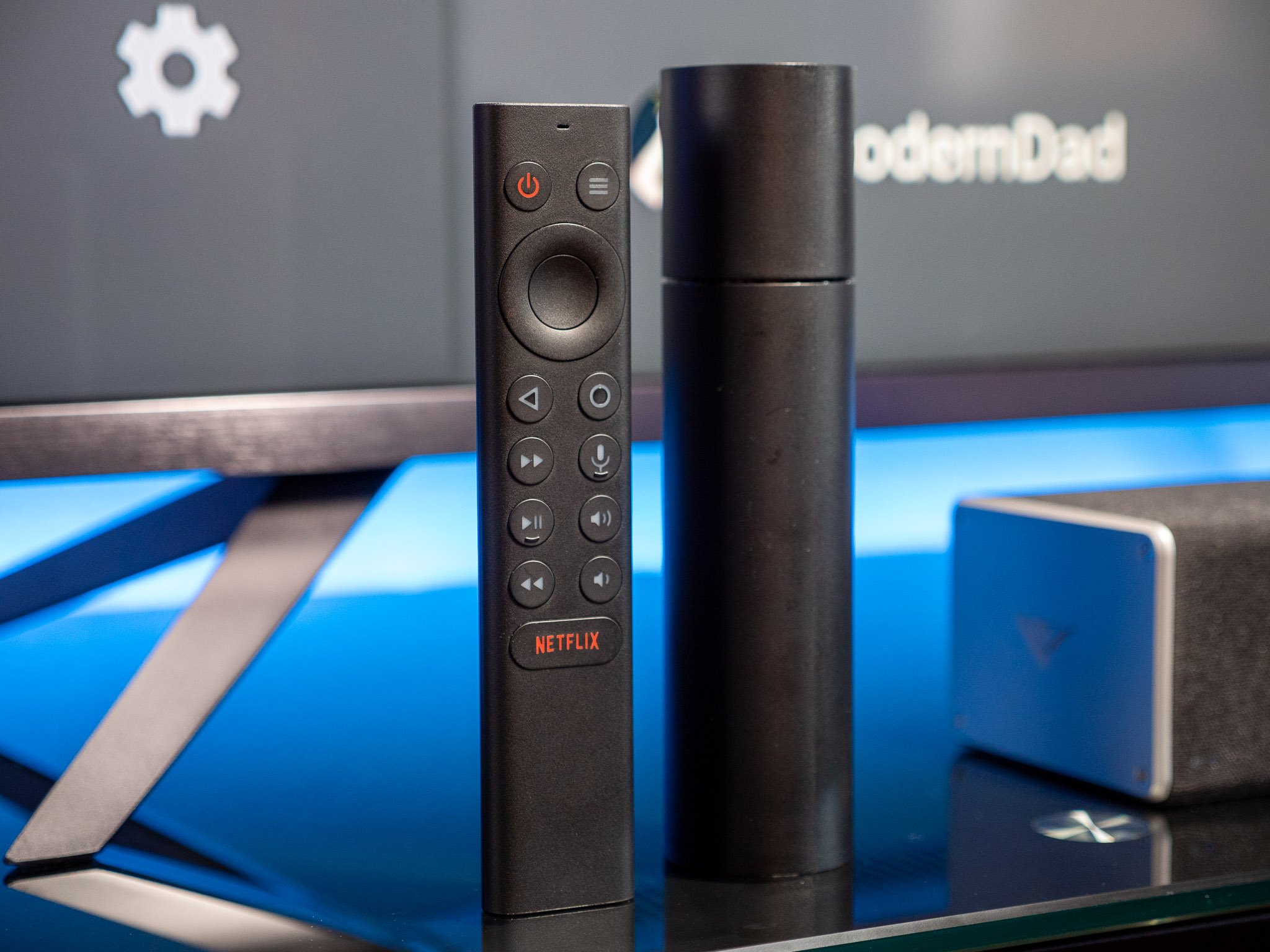NVIDIA Shield TV (2019)
A compact redesign
$129 at Amazon $129 at Best Buy $150 at Walmart
Pros
- Clever and compact design
- Updated remote is fantastic
- Still the best Android TV experience
- Improved AI Upscaling is great
Cons
- Might run into issues running some Android games
- Not novice-friendly out of the box
The most striking change for the 2019 NVIDIA Shield TV refresh is its unique tube shape and the redesigned remote. This streamlined and portable stream box with upgraded processing power still delivers the best Android TV experience you can buy.
NVIDIA Shield TV Pro (2019)
Subtle upgrade

$200 at Amazon $200 at Best Buy $200 at B&H Photo
Pros
- Sleek Shield TV design
- More RAM and double the onboard storage
- Offers USB ports for external storage
- The one you'll want for Plex and gaming
Cons
- Less internal storage than older Pro model
- More expensive than the tube
- Not enough new features to justify upgrading
The NVIDIA Shield TV Pro (2019) looks and runs nearly identically to the older Shield TV Pro model, which is great news because we loved all that the older Pro model could do. The only downside here is the downgraded internal storage.
NVIDIA has updated its Shield TV lineup at long last, giving us a completely redesigned standard model while preserving the sleek console design for the Pro model. Both ship with a redesigned controller that's both easier to use and harder to lose, and
Choosing between the two will depend on your living room setup, whether the Shield TV Pro's enhanced gaming and Plex services are worth the extra money, and arguably most importantly, whether you already own a Shield TV.
NVIDIA Shield vs. Pro: What's the difference?
It used to be a pretty easy choice whether you wanted to go with the NVIDIA Shield vs. Pro. While you had to look to the internal specs to spot the differences between the two, the Pro model offered a substantial storage upgrade that justified the extra cost.
This time around, NVIDIA has made things much more straightforward with a radically redesigned Shield TV that offers a spec bump over the older models in a svelte and streamlined tube that's designed to take up barely any space behind your TV. It's not a stick or dongle, either, so it should comfortably fit between any TV shelf and wall. We think the Shield TV is the more interesting device that will appeal to more casual users who just want to plug something into their TV and get to streaming.
The standard Shield TV has been scaled down to hide anywhere behind your living room TV easily.
Meanwhile, the Pro model has maintained the same edgy look as previous Shield TV models. You can configure it as a SmartThings hub for controlling smart home devices, and there are two USB ports for connecting external storage, keyboards, or an OTA antenna. It also offers NVIDIA's full suite of gaming services and features along with 16GB of internal storage and spec bump up to 3GB of RAM. This option is designed for the more hardcore tech enthusiasts who love to tinker and accessorize their gadgets.
It's worth reiterating that both models are still great for gamers and support the entire library of games from NVIDIA's GeForce NOW service and GameStream. However, you might have issues on the tube Shield TV attempting to play Advanced Android Gaming titles that require 3GB of RAM. That means if you want to download and play games like Doom 3 or Portal right onto your Shield TV, you're best off going with the Pro model. But both of these will still work with the best gaming controllers, so you can fire up your favorite games and use your favorite controller.
Speaking of GeForce NOW, a recent update from NVIDIA enabled 4K HDR streaming, bringing the streaming game service on par with Google Stadia. This is possible through the "RTX 3080 tier" of the game streaming service, which also brings support for 120fps gameplay. Plus, NVIDIA has confirmed that this is limited to the Shield TV until sometime in the future.
| Category | Shield TV | Shield TV Pro |
|---|---|---|
| Price | $129 | $200 |
| Processor | Tegra X1+ | Tegra X1+ |
| Storage | 8 GB | 16 GB |
| RAM | 2GB | 3GB |
| MicroSD | Yes | Yes |
| Ethernet | Yes | Yes |
| USB | No | 2 |
| Dolby Vision | Yes | Yes |
| Dolby Atmos | Yes | Yes |
| AI upscaling | Yes | Yes |
| Plex server | No | Yes |
| SmartThings | No | Yes |
| GeForce gaming | Yes | Yes |
| AAA gaming | Yes | Yes |
Beyond the packaging for the internals, the other major upgrade came in the remote department and is consistent across both models. The previous remote style was too thin and easy to lose, and the touch sensor for controlling the volume was more flash than substance.
The redesigned NVIDIA Shield remote is much more substantial to hold with a more traditional button layout that features dedicated media controls, a big Netflix button, and a customizable button in the top-right corner that can be programmed to open settings, toggle the AI-enhanced upscaling, mute volume, and much more. Plus, the remote is designed to work with older Shield models and can be purchased by itself for those who have one of those older models.
NVIDIA Shield vs. Pro: A great entry point for anyone new to Shield TV
The NVIDIA Shield TV is hands-down one of the best Android TV box you can buy, which still rings true with the previous generation. The standard Shield TV is an easy recommendation for anyone looking for a simple way to stream from your favorite Android streaming apps. In contrast, those looking for more connectivity options will gravitate toward the Shield TV Pro.
But things get a bit more complicated if you already own an older version of the NVIDIA Shield TV — specifically the 2017 NVIDIA Shield TV Pro. Odds are good that your Shield TV is still running great, thanks to NVIDIA doing a consistently great job with timely software updates. The 2017 model also came with 500GB of internal storage, which was probably a big reason you opted for the Pro model.
Of course, the 2019 lineup does offer some technical upgrades that may be worth upgrading for. Both models support Dolby Vision and Dolby Atmos, and the AI-enhanced upscaling will not be coming to older Shields, so if that feature entices you, it is worth considering an upgrade.
NVIDIA Shield Android TV 4K HDR
Our pick
$129 at Amazon $129 at Best Buy $150 at Walmart
The best balance of price and features
The non-Pro NVIDIA Shield TV is a compact new design that still delivers outstanding performance and improved AI-powered upscaling. A great choice if you want the best Android TV experience.
NVIDIA Shield Android TV Pro 4K HDR
Subtle upgrade

For hardcore streaming enthusiasts
$200 at Amazon $200 at Best Buy $200 at B&H Photo
The Shield TV Pro is the better choice if you care about expandable storage, using your Shield TV as a Plex server, and care about NVIDIA's gaming offerings. It offers more connectivity options and can be used as a hub for SmartThings.
Source: androidcentral



